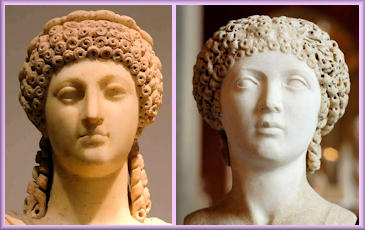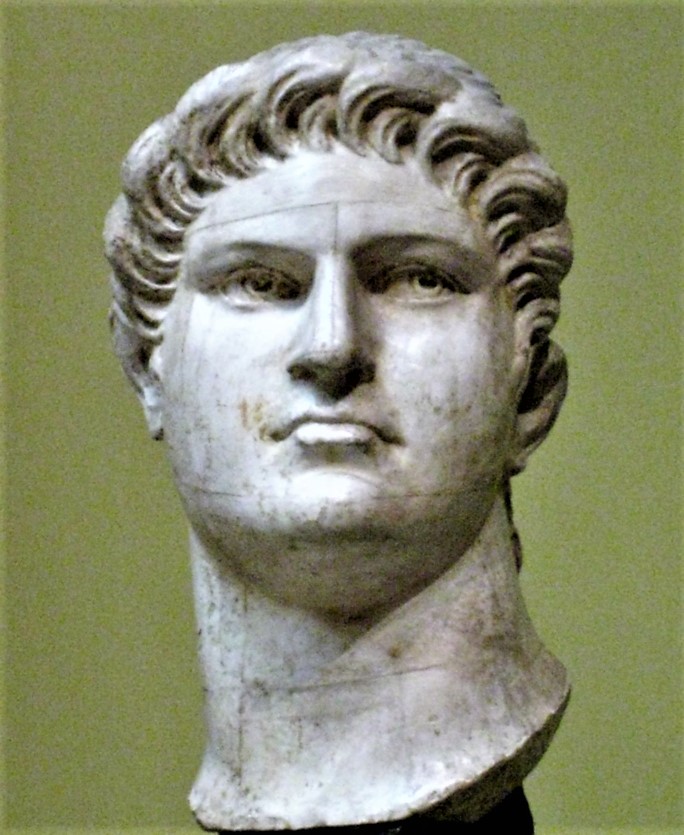Ancient Rome was celebrated for its significant contributions to architecture, literature, and politics. It was also a society where certain aspects of sexual expression and relationships exhibited a degree of openness and complexity that still shocks people today.
During the reign of Emperor Nero, homosexuality, though not openly discussed or embraced, could still be found within the private spheres of Roman life.
This brings us to one of the strangest relationships in Roman history. The marriage of Emperor Nero to Sporus.
In this article, we will give historical context about marriage and relationships within ancient Roman culture. We will also explore the tumultuous reign of Emperor Nero and why he decided to marry a man and pass him off as his wife.

Traditional Relationships in Ancient Rome
Marriage in ancient Rome was a pivotal institution that played a central role in the social and political fabric of society.
It was viewed not only as a union between two individuals but also as a means of securing alliances, managing family honor, and ensuring the continuity of the bloodline.
While the expectation was for heterosexual unions to fulfill political and societal obligations, instances of same-sex relationships were not uncommon.
Early Life of Sporus
Born into relative anonymity, historical records provide sparse information regarding the circumstances of his birth and upbringing.
The exact circumstances that brought Sporus into Nero‘s inner circle remain unclear. But it was within this environment of political maneuvering, eccentricity, and unorthodox relationships that Sporus rose to prominence.
Scholars have theorized that the name Sporus was possibly bestowed upon him as a derogatory epithet when the mistreatment began. This interpretation is rooted in the word’s Greek origin, σπόρος, which translates to “seed” or “semen.”
The choice of this epithet could be linked to the assertion that Sporus was unable to father children, reflecting the degrading nature of the title.
Brief Overview of Emperor Nero
Nero was the last ruler of the Julio-Claudian dynasty. He ascended to the throne in AD 54 at the age of 16 following the death of his stepfather, Emperor Claudius.
Nero’s reign became known for its eccentricities, artistic pursuits, and tyranny.
There is debate about whether Nero was directly responsible for starting The Great Fire of Rome in AD 64 or whether he “played the fiddle while Rome burned.” His name today has become synonymous with fire and tyranny.

Nero’s legacy endures in several public works projects, including the construction of the Domus Aurea, a grand palace in Rome, and the completion of the Circus Maximus.
He also sought to boost cultural and athletic events. He wanted to showcase his artistic inclinations and contribute to the flourishing of Roman arts.
After a series of events that culminated in a revolt against his rule, Nero was forced out of his position as Emperor. In the year 68 AD, discontent among many groups, including the Senate, the military, and provincial governors, grew significantly.
His extravagant lifestyle, autocratic behavior, and the rumors of his negligence during the Great Fire of Rome in 64 AD were a tipping point for the Roman people.
As anger against him spread, Nero’s support dwindled, and several provinces declared their allegiance to other candidates for the throne. In the face of growing opposition and the threat of imminent removal by force, Nero lost the support of the palace guard tasked with protecting him.
Faced with the prospect of execution and the end of his reign, Nero fled to a villa outside the city with four loyal freedmen, Epaphroditus, Phaon, Neophytus, and Sporus. Nero ordered them to dig a grave for him.
Some accounts say that Nero died by suicide, while other accounts say that he could not bring himself to do it and forced his private secretary, Epaphroditus, to perform the task.
Regardless of how it happened, Nero died on June 9, 68 AD. This marked the end of the Julio-Claudian dynasty and the beginning of the Year of the Four Emperors, a period of civil war and political upheaval in Rome.
Nero’s Marriage to Sporus
The strange arrangement began after the death of Nero’s wife, Poppaea Sabina, in 65 AD. The official story is that she died in childbirth but there were rumors abound that Nero kicked her to death in a fit of rage.
In 67, Nero married Sporus who looked a lot like Poppaea. He had the young man castrated to preserve his youthful and feminine looks and publicly presented Sporus as his wife.
During a trip to Greece, Nero and Sporus were accompanied by the “mistress of the wardrobe.” They dressed Sporus in the attire customary for Roman empresses.
The unconventional nature of the marriage extended beyond societal expectations. Prior to Sporus, Nero had married another freedman named Pythagoras, who had played the role of Nero’s husband. With Sporus, Nero reversed the roles, portraying him as Nero’s wife.
The motivations behind Nero’s marriages to freedmen like Sporus and Pythagoras are not precisely known and subject to historical interpretation. Some scholars suggest that Nero’s actions were driven by a desire to defy social norms and challenge the establishment, or maybe he just didn’t care what people thought.
What is known is that the relationship stood in stark contrast to the societal expectations of ancient Rome
Sporus After Nero’s Death
The details of Sporus’s life after Nero’s death are shrouded in mystery, with limited contemporary records surviving. Following Nero’s downfall and the subsequent civil war in Rome, Sporus faced an uncertain future.
The fate and legacy of Sporus remain foggy. Whether he faded into obscurity, faced persecution, or managed to carve out a meaningful existence in the aftermath of Nero’s reign remains forever lost to time.
Interpreting Nero’s Relationships in a Modern Context
The cultural, social, and moral norms of ancient Rome were very different from the world we live in today. This makes it challenging to apply our current understanding of relationships, sexuality, and social standing without bias.
Nero’s actions, viewed through the lens of ancient Roman society, may have been driven by a myriad of factors, such as political strategy, personal preferences, or a desire to challenge established norms.
As modern observers, our interpretations are inevitably shaped by our own cultural context, and it’s crucial to avoid imposing present-day values onto the past.

